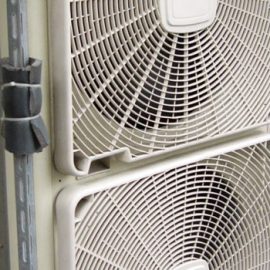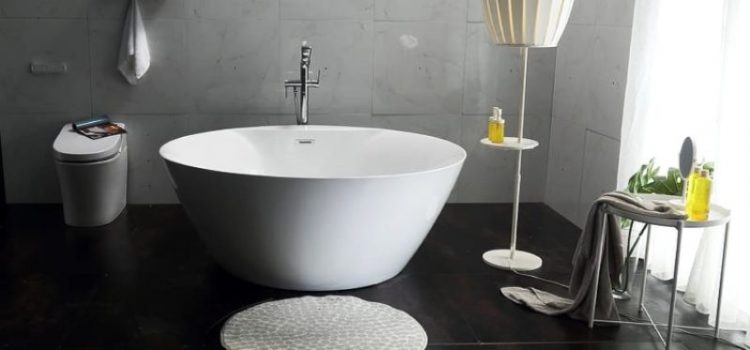
If design and dimensions are decisive factors in the choice of a bathtub, the material is just as important, if not more so. It is the material on which its durability, ease of maintenance and, last but not least, its price depend. This post is a summary of the different bathtub materials to help you with your purchase.
Metal bathtubs
Cast iron
This is the traditional bathtub material. Its advantages are numerous: very good insulation which allows the bath to keep the heat of the bath for a long time, excellent resistance to shocks and scratches and easy maintenance. Cast iron is also a 100% recyclable material.
But if cast iron is not widely used in the manufacture of bathtubs today, it is because it is a heavy material: count more than 100 kg for a bathtub with classic dimensions (L 160 × W 75 × H 65)! Another disadvantage is its limited supply and high price.
Enameled steel
Enameled steel is impact and scratch-resistant, lightweight (unlike cast iron), and 100% recyclable. Its cost is also attractive.
But enameled steel has a cold touch and above all does not retain the heat of the bath well. In order to prevent this problem as much as possible, you should choose the material of excellent quality and possibly add an apron (made of wood, for example) to the bathtub. Another disadvantage is that enameled steel tends to flake off over time, even though it is relatively easy to renovate.
Bathtubs made of synthetic materials
Because of their many advantages, synthetic materials are widely used in the manufacture of bathtubs.
Acrylic
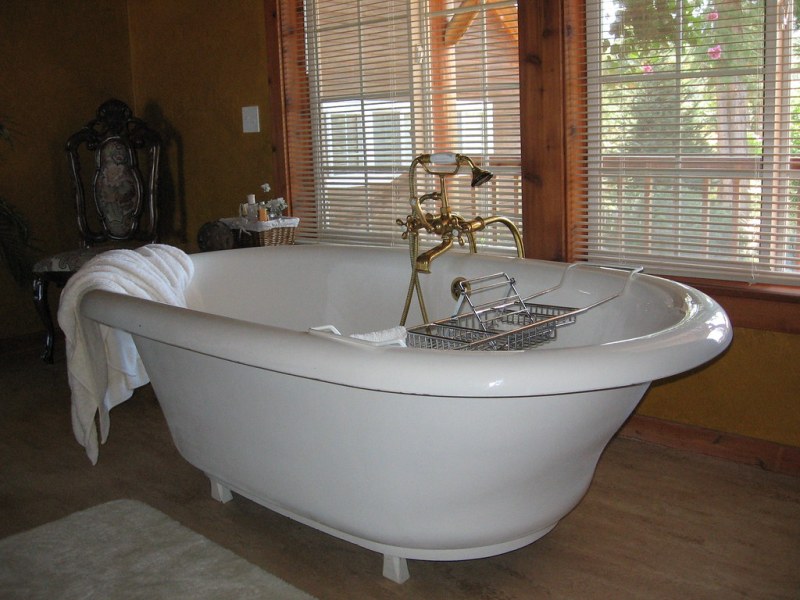
It is the most commonly used material today. Polymethyl methacrylate (PMMA), a thermoformable material, is particularly economical, does not have a cold touch unlike enameled steel, and is much lighter than cast iron. It retains the water temperature well and allows the bathtub to take many shapes.
However, it is less resistance to impact, scratches and UV rays. Also, acrylic is not resistant to aggressive detergents.
Reinforced acrylics
There are also reinforced acrylics with increased durability: such as Toplax®, which is very light, non-slip and recyclable; Biocryl®, which limits the formation of limescale and the proliferation of bacteria; Acryl®, which is easy to pierce; or Quaryl®, a mixture of quartz and Acryl®, which is non-slip, non-porous, resistant to shocks and scratches, but also more expensive.
Note: there are also bathtubs made of polyethylene, a resin used to make bathtubs with integrated LEDs.
Solid Surfaces
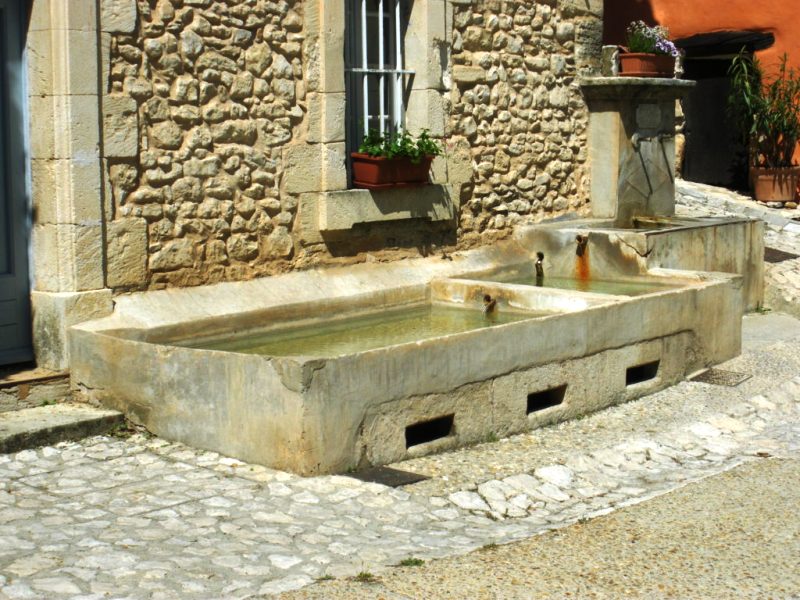
These synthetic materials are composed of natural materials, such as stone, bonded with a resin. Corian® is one of the best known. All of them multiply the advantages with high impact and scratch resistance, but also resistance to stains and bacteria, as well as good insulation and ease of maintenance. However, they are used less than acrylic because of their particularly high cost.
Synthetic concrete
Synthetic concrete is a mixture of natural stones bound by a resin. This cast material has an impermeable and antibacterial surface that prevents water infiltration and the proliferation of bacteria. It is also easy to clean, but expensive.
Bathtubs made of natural materials
The rarer bathtubs made of natural materials are particularly aesthetic.
Wood
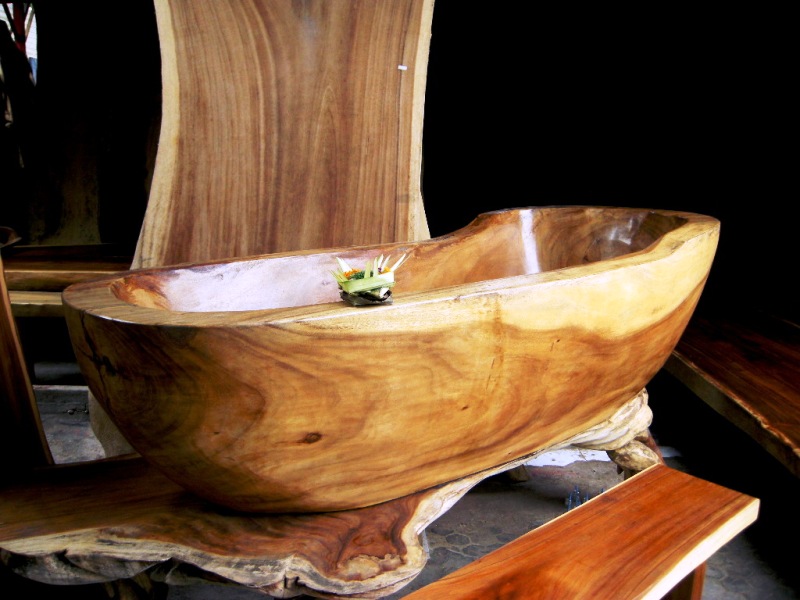
Wood gives a warm and natural look to the bathtub. Wood is not only Ecological but also an excellent thermal insulator that keeps the heat in the bath for a long time and is easy to maintain.
But wood must be chosen in a rot-proof species (teak, ipe, larch, acacia, red cedar, etc.), which adds to the price.
Glass
With glass, the bathtub is ultra-modern, but it will be slippery and fragile. It will also need regular maintenance to remove fingerprints and limescale. Finally, it is particularly expensive.
The stone
The natural and sculptural stone stands out not only for its beauty but also for its weight: up to 500 kg! The stone bathtub is therefore not recommended on the upper floor.
Concrete
Concrete, usually waxed, allows for custom-made bathtubs because it is poured in a formwork. If the material itself is not particularly expensive, it is the necessary craftsmanship that will drive up the bill.
Copper
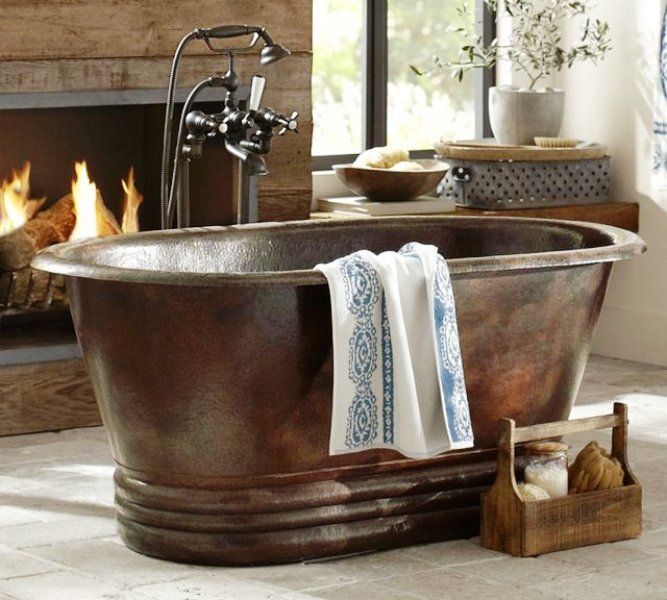
Elegant and retro, the copper bathtub benefits from all the qualities of this material. It is therefore corrosion-resistant and immediately takes the temperature of the water, without heat loss. Infinitely recyclable and antibacterial, copper remains an expensive material.
Bathtub prices by material
You can find bathtubs in DIY and bathroom stores, specialty stores and on the Internet. Expect to pay:
– from $700 to over $1,500 for a cast iron bathtub;
– from $200 to over $400 for an enameled steel bathtub;
– $100 to over $400 for an acrylic bathtub;
– from $300 to over $700 for a reinforced acrylic bathtub;
– from $900 to over $1,500 for a polyethylene light tub;
– $2,000 to over $4,500 for a Solid Surface bathtub;
– $2,000 to over $4,000 for a synthetic concrete bathtub;
– from $700 to over $5,000 for a wooden bathtub;
– $8,000 to over $14,000 for a glass bathtub;
– from $3,000 to over $8,000 for a stone bathtub;
– $2,000 to over $4,000 for a concrete bathtub;
– from $4,500 to over $7,000 for a copper bathtub.
Hope the above helps you to decide which material better suits your needs. Remember to leave your comments below.

